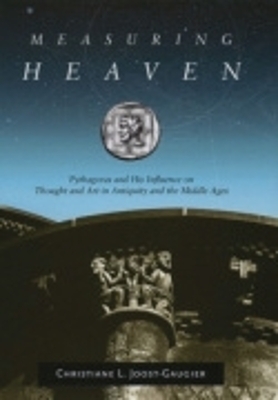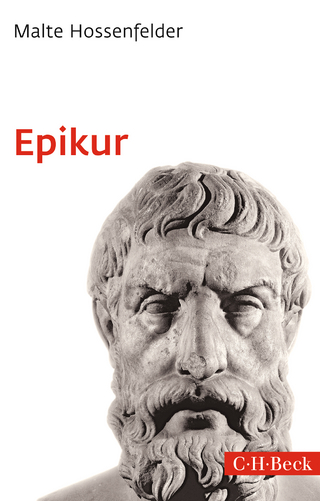
Measuring Heaven
Pythagoras and His Influence on Thought and Art in Antiquity and the Middle Ages
Seiten
2007
Cornell University Press (Verlag)
978-0-8014-7409-5 (ISBN)
Cornell University Press (Verlag)
978-0-8014-7409-5 (ISBN)
Surviving fragments of information about Pythagoras (born ca. 570 BCE) gave rise to a growing set of legends about this famous sage and his followers, whose reputations throughout Antiquity and the Middle Ages have never before been studied...
Surviving fragments of information about Pythagoras (born ca. 570 BCE) gave rise to a growing set of legends about this famous sage and his followers, whose reputations throughout Antiquity and the Middle Ages have never before been studied systematically. This book is the first to examine the unified concepts of harmony, proportion, form, and order that were attributed to Pythagoras in the millennium after his death and the important developments to which they led in art, architecture, mathematics, astronomy, music, medicine, morals, religion, law, alchemy, and the occult sciences. In this profusely illustrated book, Christiane L. Joost-Gaugier sets out the panorama of Pythagoras's influence and that of Christian and Jewish thinkers who followed his ideas in the Greek, Roman, early Christian, and medieval worlds. In illuminating this tradition of thought, Joost-Gaugier shows how the influence of Pythagoreanism was far broader than is usually realized, and that it affected the development of ancient and medieval art and architecture from Greek and Roman temples to Gothic cathedrals.Joost-Gaugier demonstrates that Pythagoreanism—centered on the dim memory of a single person that endured for centuries and grew ever-greater—inspired a new language for artists and architects, enabling them to be "modern."
Surviving fragments of information about Pythagoras (born ca. 570 BCE) gave rise to a growing set of legends about this famous sage and his followers, whose reputations throughout Antiquity and the Middle Ages have never before been studied systematically. This book is the first to examine the unified concepts of harmony, proportion, form, and order that were attributed to Pythagoras in the millennium after his death and the important developments to which they led in art, architecture, mathematics, astronomy, music, medicine, morals, religion, law, alchemy, and the occult sciences. In this profusely illustrated book, Christiane L. Joost-Gaugier sets out the panorama of Pythagoras's influence and that of Christian and Jewish thinkers who followed his ideas in the Greek, Roman, early Christian, and medieval worlds. In illuminating this tradition of thought, Joost-Gaugier shows how the influence of Pythagoreanism was far broader than is usually realized, and that it affected the development of ancient and medieval art and architecture from Greek and Roman temples to Gothic cathedrals.Joost-Gaugier demonstrates that Pythagoreanism—centered on the dim memory of a single person that endured for centuries and grew ever-greater—inspired a new language for artists and architects, enabling them to be "modern."
Christiane L. Joost-Gaugier is a distinguished independent scholar. She is the author of Raphael's Stanza della Segnatura: Meaning and Invention and Jacopo Bellini: Selected Drawings and her work in the history of art and the history of ideas has been published extensively in international journals and conference proceedings.
| Erscheint lt. Verlag | 7.8.2007 |
|---|---|
| Verlagsort | Ithaca |
| Sprache | englisch |
| Maße | 155 x 235 mm |
| Gewicht | 907 g |
| Themenwelt | Kunst / Musik / Theater ► Kunstgeschichte / Kunststile |
| Geisteswissenschaften ► Philosophie ► Philosophie Altertum / Antike | |
| Mathematik / Informatik ► Mathematik ► Geschichte der Mathematik | |
| ISBN-10 | 0-8014-7409-4 / 0801474094 |
| ISBN-13 | 978-0-8014-7409-5 / 9780801474095 |
| Zustand | Neuware |
| Haben Sie eine Frage zum Produkt? |
Mehr entdecken
aus dem Bereich
aus dem Bereich
mit Sokrates, Seneca, Platon & Co. im Gespräch
Buch | Hardcover (2023)
FinanzBuch Verlag
CHF 25,20


